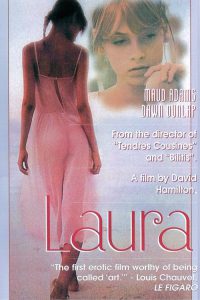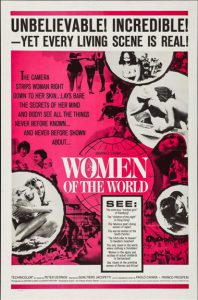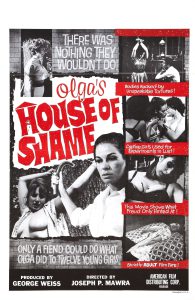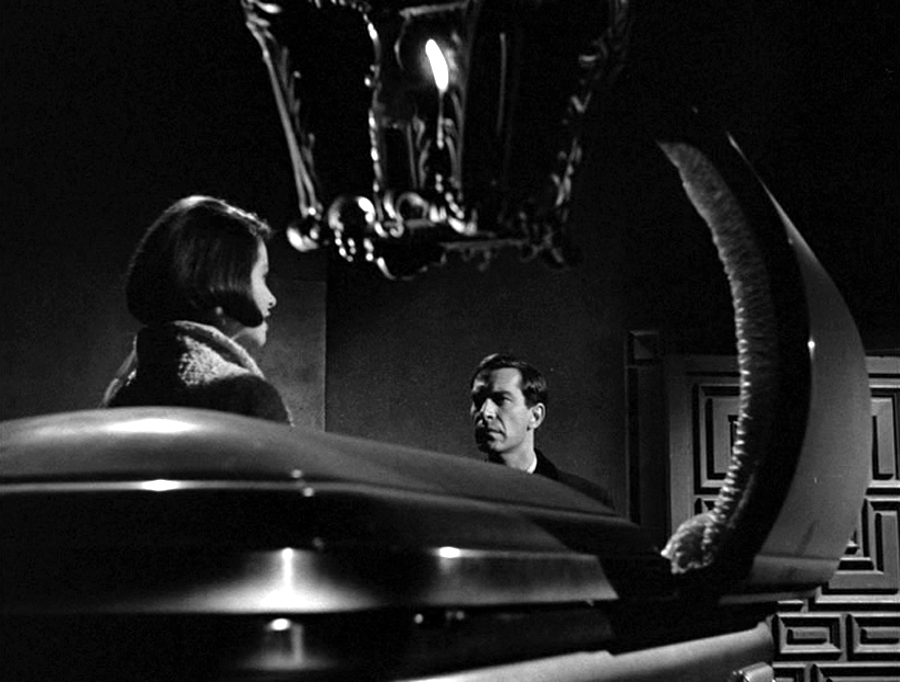Forbidden World (1982) by #AllanHolzman
w/ #JesseVint #DawnDunlap #JuneChadwick
A federation marshal arrives on a remote planet where a genetic experiment has gotten loose.
"Deadly. Forbidden. And Alive."#Horror #SciFi#NotQuiteClassicCinema pic.twitter.com/0hMQdUpkSC
— Angus Kohm (@AngusKohm) April 24, 2021
Someone once asked me if I had seen a movie called Forbidden World. I said “Yes, of course,” but I was thinking of Forbidden Planet (1956). This is not unlike an incident that was once described to me by a friend. His parents made a plan to meet another couple at a Chinese restaurant called The Good Earth (named after the book and movie, I would presume). Unfortunately, on the same street about a block away from the The Good Earth, there was another Chinese restaurant called The Great World. I don’t recall who went to The Great World, and who went to The Good Earth, but each couple sat in a different restaurant waiting for the other couple and getting angrier and angrier. It’s only lucky that I hadn’t been invited to meet someone at a theatre showing Forbidden World – I might have ended up angrily watching Forbidden Planet by myself. Of course, neither one of these films was playing the theatres by the time that I could have gone…
Oddly enough, Forbidden World (1982) is not a ripoff of Forbidden Planet. It’s actually a ripoff of Alien (1979), and as I talked about it my post about Galaxy of Terror (1981), there were many, many ripoffs of Alien out there. Both Forbidden World and Galaxy of Terror were produced by Roger Corman, and I had heard that Forbidden World was a sequel to Galaxy of Terror. It’s not, at least in any way that I could notice. Perhaps it could more correctly be described as a follow up to the first film. Apparently, in typical Roger Corman style, some of the same sets were used for both films (and they were designed by future filmmaking superstar James Cameron!). The two movies are, however, completely different stories (similarities to Alien aside) with completely different characters. The strangest part might be that Galaxy of Terror is actually more like Forbidden Planet than Forbidden World is – go figure.
Allan Holzman was already an accomplished film editor when he was given the chance to direct Forbidden World. He went on to direct a few other feature films including Grunt! The Wrestling Movie (1985), which was done in mockumentary style, perhaps predicting Holzman’s future career as a documentary filmmaker.
Apparently, Roger Corman was unsatisfied with Holzman’s original cut of the movie, so he trimmed five minutes out of it. The director’s cut has been made available, for the first time, as an extra on the Shout Factory Blu-ray.
A friend of mine has referred to Forbidden World as one of the best Alien clones, and it’s hard to argue with that. It certainly delivers the goods in a way that many such films don’t (violence, gore, nudity, etc.). And at 77 minutes (82 for the director’s cut) it’s a tight, fast paced package of fun.
Jesse Vint, perhaps most famous for Macon County Line (1974), stars as Mike Colby, “the best troubleshooter in the Galaxy”. Along with his robot sidekick, Colby is brought to planet Xarbia to investigate a hostile synthetic life form, which was created by an elite group of scientists. Among the researchers is lab assistant Tracey Baxter, played by Dawn Dunlap, who only appeared in a handful of movies during her brief career. She got her start playing the title character in Laura, les ombres de l’été (1979) at the age of 15. June Chadwick, who many of us remember from This Is Spinal Tap (1984) – in which she played Jeanine Pettibone, long time girlfriend of David St. Hubbins – plays Dr. Barbara Glaser in Forbidden World. And if anyone has ever lain awake late at night wondering what she might look like sharing a futuristic shower/steam room with another woman (Dunlap), Forbidden World provides a very clear answer…
It’s fair to say that Forbidden Planet is a better movie than Forbidden World. Forbidden Planet is a is a certified classic, after all. But Forbidden World is as fine an example of #NotQuiteClassicCinema is as I have ever seen. If you enjoy a good ripoff of Alien, or if you like gooey gore and over-the-top exploitation from the early 1980s, you really can’t go too wrong with this sci-fi horror sleaze-fest. I have not yet watched the longer director’s cut, but I am very much looking forward to doing that on a future #FridayNightAtTheHomeDriveIn.







